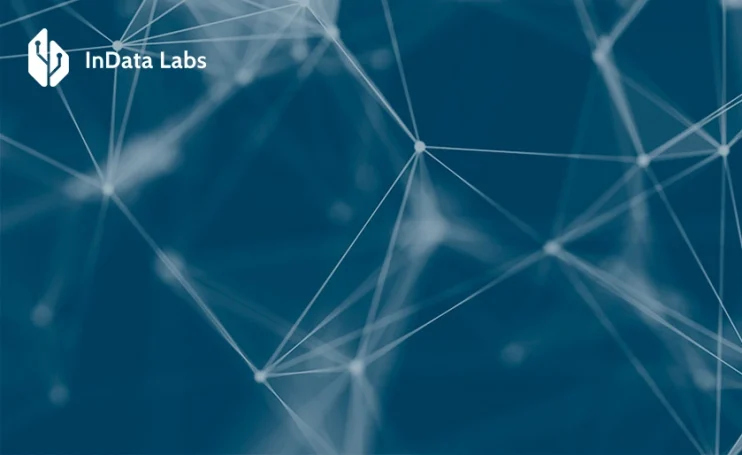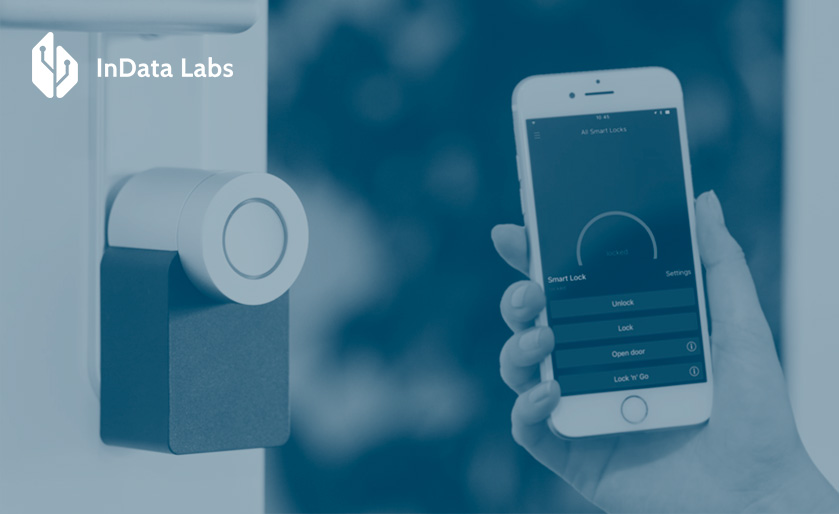Artificial intelligence is one of the most impressive tech advancements of our times. The latest development of generative artificial intelligence has seen it applied across dozens of industries and sectors. From manufacturing and robotics to pharmaceuticals, supply chain management, and everyday AI software automation, it’s happening everywhere.
Artificial intelligence history and latest developments are rapidly streamlining the world of business with its automation and smart decision-making capabilities. Since its release, AI developments have been making waves across the globe. In the next few years, we’re going to observe a continuous and more transformative impact of AI on different sectors.
Exploring recent developments in artificial intelligence
Here are some of the latest artificial intelligence developments that you should know about.
#1: Artificial intelligence trends in robotics
Many robotics startups are now embracing AI to develop and automate new AI systems. Firms like Olis Robotics have been driving innovation through the use of plug-and-play controls fitted with AI-powered software.
Olis Robotics CEO Don Pickering has noted that his firm’s proprietary controllers and software allow it to operate tethered robots on ocean floors. Plus, they can use robotics to service satellites using high-latency satellite links and to clean up hazardous chemical spills using robotics that rely on 4G and 5G networks.
These innovations are quickly expanding the role of robotics and making remarkable impacts on humanity’s collective advancement.
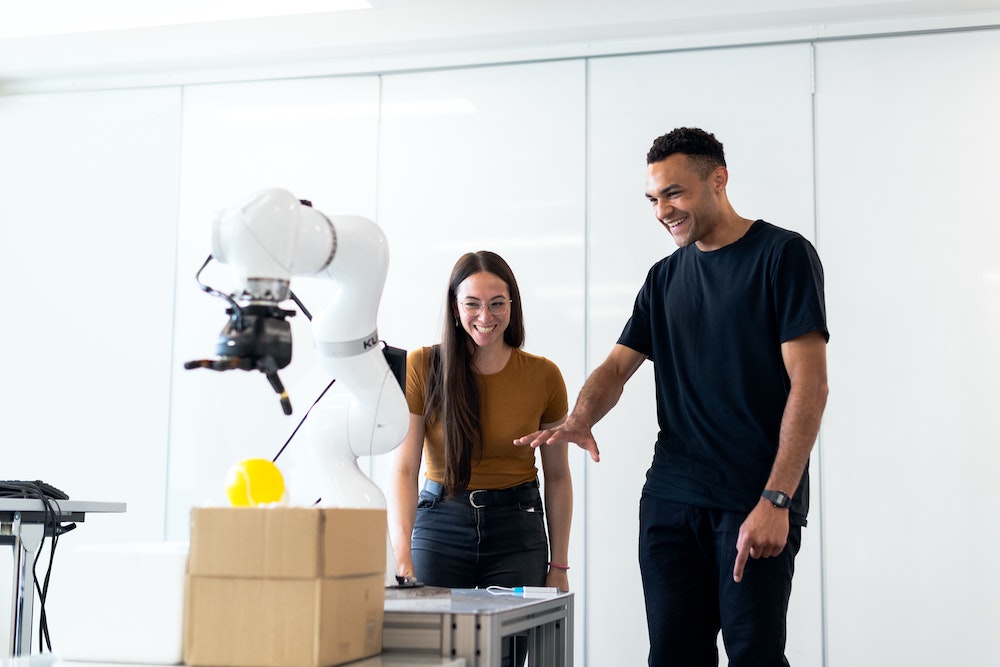
Source: Unsplash
Artificial intelligence history and latest developments are pioneering the progression of robotic natural language processing. The release of ChatGPT has sped up the widespread AI adoption of advanced NLP. With this NLP, language is identified and understood in a much more complex and machine-computable manner.
#2: Machine learning for nature conservation
Oxford University has used artificial intelligence’s latest developments to develop new software that can recognize and trace the faces of endangered species like chimpanzees individually in their natural habitats. The software is assisting conservationists and researchers to maximize the impacts of their efforts. While at the same time, minimizing the time and resources needed to observe and track at-risk species.
Oxford DPhil student Dan Schofield and his peers have trained the machine learning model using over 10 million images of wild chimpanzees. They obtained the images from Kyoto University’s Primate Research Institute’s video footage of wild chimps in West Africa.
The team aims to use the artificial intelligence trends software to positively impact conservation efforts for these endangered primates, and potentially, other species too.

Source: Unsplash
#3: AI advancements in healthcare
The latest development of artificial intelligence in the healthcare world is enabling improvements in accurate diagnoses, clinical decision-making, and optimal patient care.
AI research is driving the widespread adoption of telemedicine at healthcare institutions. It’s incorporated into wearable devices that offer real-time patient data and apps with useful features like screen sharing, video chat, and texting. Patients can even use these apps to book medical appointments and follow-ups and to request prescriptions.
There are several challenges in diagnostic AI that are steadily being overcome. For example, it has long been challenging for AI to learn to correctly interpret diagnostic results under human supervision.
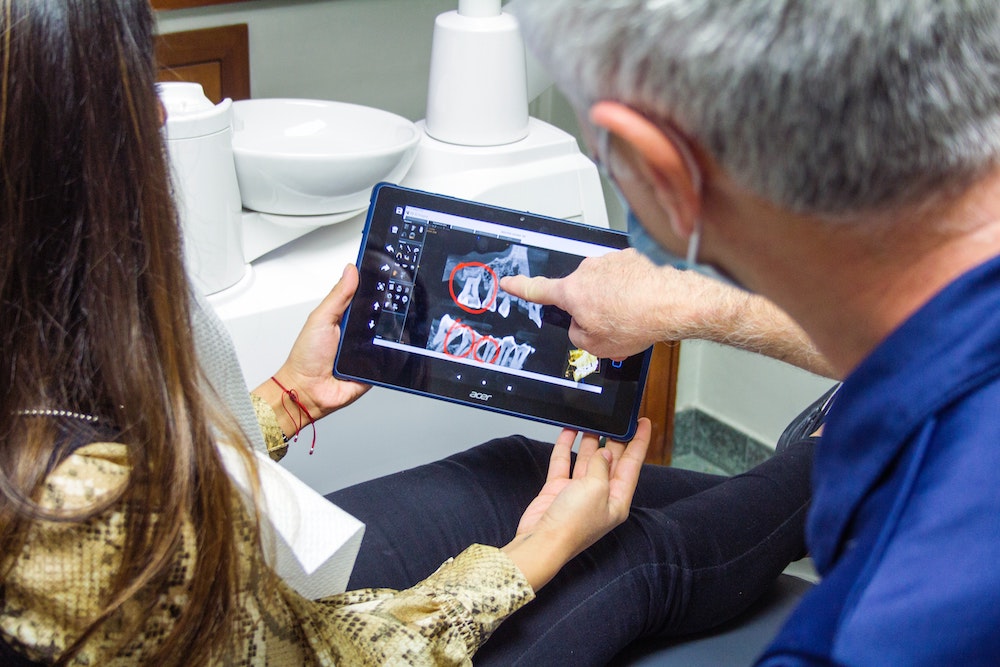
Source: Unsplash
It’s difficult for machines to identify rare diseases due to image shortages. Recent developments in AI have allowed for the augmentation of AI training by computer-generated X-rays to create a larger database. Through this database, neural networks are trained to identify rare conditions.
#4: AI developments in the automobile sector
Self-driving cars are being widely hailed as the latest development in artificial intelligence and the future of transportation. Autonomous vehicles powered by AI are gaining rapid popularity. According to PwX, it’s expected that autonomous vehicles will cover 40% of mileage driven in Europe by 2030.
Cars will connect to one another and transport infrastructure networks via AI in the future. This means that vehicle occupants will connect with the outside world through the use of augmented reality, allowing them to use multi-media services during their journeys.
The projection suggests that by 2025, the number of operational connected cars will surpass 400 million. Furthermore, it is anticipated that by 2030, connected cars will account for a staggering 96 percent of all newly shipped cars worldwide. These vehicles come equipped with Internet of Things-paired sensors, geo-analytical capabilities, and connectivity platforms for Big data. This signals the dawn of a transition towards a more unified vehicle operational platform.

Source: Unsplash
The US Department of Transportation is confident that self-driving vehicles will replace eCommerce and business road freight. Presently, road freight is one of the largest carbon emission producers in existence. This will optimize future vehicles’ fuel consumption and improve time and energy management and road safety alike.
These artificial intelligence trends will work towards mitigating the climbing CO2 levels. These levels are fueling climate change and the potentially catastrophic destabilization of the world’s natural ecosystems. The global transportation industry currently accounts for 15% to 20% of the world’s total carbon emissions.
#5: Computer vision and video analysis tech artificial intelligence trends
Recent AI developments in deep learning have made it more cost-effective and accessible than ever to deploy video and image analysis tools. These computer vision tools have important applications in the manufacturing and medical sectors.
In radiology, AI tools are being used to improve the efficacy of diagnostic procedures. This affords physicians the opportunity to offer faster and more accurate diagnoses.
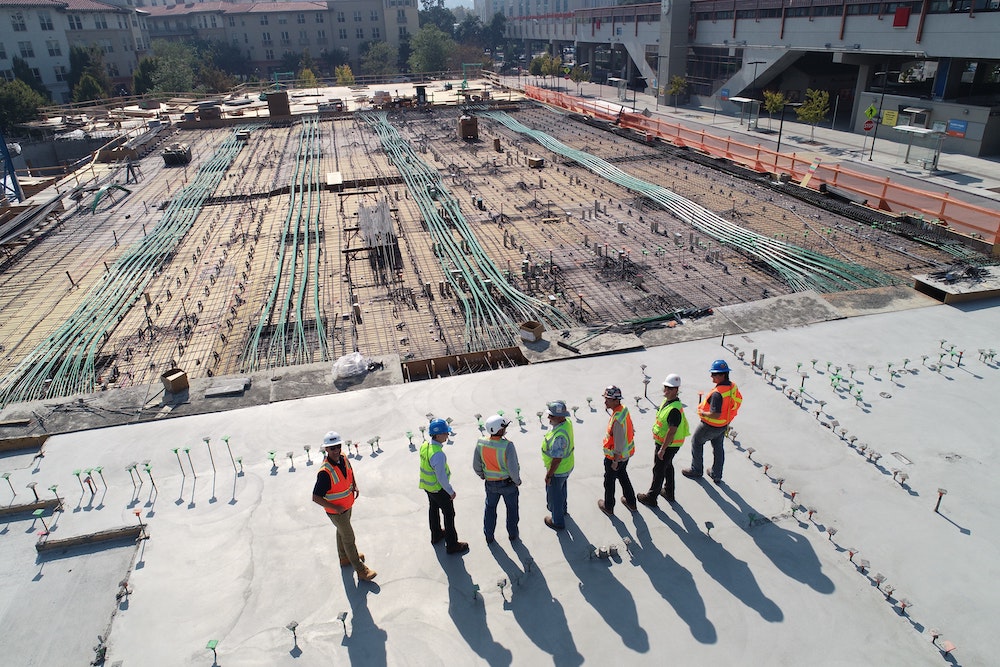
Source: Unsplash
Accessible computer vision AI technology is being used in manufacturing to fuel the Industry. It’s revolutionizing the automation of safety management, supply chain management, and quality control procedures. Professionals in all industries would do well to monitor future computer vision trends.
#6: AI advancing towards high-level human functions
Using tools to achieve certain objectives and goals is long considered only human behavior. With the exception of a few other animal species, such as chimpanzees and corvids.
Recently, new AI agents developed by OpenAI were able to learn to use tools in an experiment based on multi-agent competition, without being deliberately taught to do so. This signifies a remarkable step forward in the development of valuable and autonomous artificial intelligence trends.
Companies like Nvidia have been able to show robots that perform tasks in the real world by learning from the actions of humans. The robots can watch how tasks get done and then re-enact these actions—a vast advancement from how robots usually behave.
Here are some more new artificial intelligence developments. Another bot program called AlphaGo has taught itself advanced strategies for playing the game ‘Go’, requiring no human training. With time, it’s expected that developments in artificial intelligence may create robots that can operate somewhat independently from humans and human knowledge.
#7: The development of robotic assistants
Would you be comfortable with a robotic nurse caring for you if you fell ill? How would you feel about a robot caregiver taking care of your elderly parents or relatives? Or a robotic retail assistant helping you pick out an extra pair of jeans?
Many countries worldwide are experiencing crises in finding enough carers to take care of their aging populations. This will become an increasingly pressing issue as the Baby Boomer generation reaches their senior years. Recent AI developments could bridge this gap. The government of Japan is currently working on promoting the acceptance of technology that would fill in for human caregivers and nurses.
Japanese developers are working to create robots that can assist people to get out of bed, predict when they may need to use a restroom, or maintain their medication schedules. The researchers’ future priorities include the development of wearable mobility aids and technology that can guide people to restrooms and to bed when new AI predicts that it’s the correct time to do so.
#8: Artificial intelligence and cybersecurity
Cybersecurity is becoming an increasingly hot topic as businesses, remote employees, and major brands all move their operations online. The rapid evolution of technology coupled with recent developments in AI has accompanied developing threats to sensitive data and networks.
Many companies have developed intuitive AI solutions to provide more comprehensive cybersecurity. This cybersecurity improves incident detection and response, identifies and communicates risks, and maintains optimal situational control.

Source: Unsplash
Some of the most recent advancements in this field include the release of Magnifier, a behavioral analytics solution from Palo Alto Networks. The latest AI developments solution models network behavior by using machine learning to enhance threat detection.
Alphabet, the parent company of Google, has introduced the cybersecurity intelligence platform Chronicle to streamline and improve cybersecurity measures as we know them.
#9: AI applications in fintech
Fintech has become a rapidly developing industry over the past few years. Traditional financial enterprises are being forced to keep up with technological advancements as new, AI-driven apps emerge and disrupt the sector.
Artificial intelligence can decimate financial institutions’ operational processing times. General intelligence technology can eliminate the need for human operators to perform manual processes and speed up the processing of deposits, payments, transactions, and approvals.
Machine learning has proven useful in fraud detection efforts. It can rapidly and accurately identify corporate policy violations and duplicate expenses. Many financial institutions and retail and eCommerce businesses have adopted chatbots to streamline their customer service efforts. Banking apps across the globe now offer new AI chatbot support. Other apps can connect financial accounts to Facebook Messenger, enabling users to ask questions and make cancelations via the popular messaging platform.
Fintech is a prime candidate for AI cybersecurity. Artificial intelligence is hugely scalable, and can rapidly analyze and process vast amounts of data to secure digital systems and protect customers’ financial investments and assets.
In the next few years, the demand for qualified data scientists who can work with AI in the Fintech sector will skyrocket as disruptive technology takes hold.
#10: More intelligent smartphone apps
AI-based custom software appears in a widening range of smartphone and tablet apps designed for everyday users. As per a Strategy Analytics report, it is projected that virtual assistants will be integrated into approximately 97% of smartphones worldwide by 2025. This suggests that nearly all smartphones will be AI-enabled by the year 2025.
Currently available apps that use the power of AI to deliver their services include Google Assistant, Microsoft Pix, and Socratic. Google Assistant allows users to check appointments, search the web, play music, and send messages hands-free. Socratic is an AI-based tutoring app that explains how to solve mathematical problems by analyzing images of equations.
In terms of specific AI features in smartphones, the search results highlight a few examples:
Meta unveiled a range of new features, including AI stickers, Instagram editing tools, chatbots, celebrity avatars, and an AI studio. Meanwhile, Apple has harnessed the power of machine learning to enhance its photography capabilities, automatically identifying people or pets within the image and seamlessly transitioning to portrait mode.
Microsoft Pix, another popular machine learning tool, uses recent AI developments to select the best three shots out of ten frames captured. The app then automatically deletes the other shots to optimize users’ photography skills and save space in their smartphone storage. It’s not the only AI-based product by Microsoft, Copilot, an updated Windows 11, and Microsoft 365 Chat were also presented to the world.
What artificial intelligence developments to expect in the nearest few years
By 2025, the AI software market is forecast to reach around 126 billion U.S. dollars, up from 22.6 billion in 2020. This growth will be driven by the increasing availability and affordability of cloud computing, data storage, and AI tools and platforms. More businesses and individuals will be able to leverage AI for various purposes, such as natural language processing, robotic process automation, and machine learning.
AI software will also be embedded into many devices and applications, such as smartphones, smart speakers, cars, and wearables, making it easier to interact with and benefit from. Here are some predictions for the state of AI and robotics in 2023- 2025, based on the latest AI developments.
AI and ML will transform the scientific method
AI and machine learning (ML) enable us to analyze massive amounts of data and discover complex patterns and relationships that would be impossible for humans to find. AI and ML can also generate new hypotheses, design experiments, and test theories, augmenting human intelligence and creativity.
By 2025, AI and ML will be widely used in scientific research, accelerating the pace of discovery and innovation across various fields, such as biotechnology, physics, chemistry, and astronomy. AI projects will enable a new golden age of science, where we can tackle some of the biggest challenges facing humanity, such as climate change, disease, and energy.

Source: Unsplash
For instance, artificial intelligence development will be changing the landscape of biopharma. AI tools like neural networks will be used to predict which drug candidates will work in humans, eliminating the costly and inefficient practice of testing on animals. AI and ML can help support climate change mitigation and adaptation, as well as climate science, across many different areas.
For instance, AI for Good is identifying and scaling solutions where AI can help us detect, adapt, and respond to climate change in many different areas, such as weather prediction, energy efficiency, or by reducing emissions from transportation, agriculture, and industry.
AI will become a pillar of foreign policy
By 2025, AI will be a major factor in international relations, influencing diplomacy, trade, warfare, and human rights. Governments will invest heavily in AI research and innovation, as well as in building alliances and partnerships with other countries and organizations. AI will also pose new challenges for global governance, requiring new norms and institutions to ensure its safe and responsible use.
AI is a practical tool in diplomacy that will be used for decision support, drafting, translation, negotiation support, and analysis of trends and future developments.
Another example shows that AI can be used in national security for surveillance, threat detection, and cybersecurity. South Korea’s Korea Superconducting Tokamak Advanced Research (KSTAR) facility has been using AI to sustain a nuclear fusion reaction running at temperatures in excess of 100 million°C for 30 seconds.
AI will enhance human capabilities and experiences
By 2025, AI will be integrated into many aspects of our daily lives, from education to entertainment, from health to finance. AI will enable us to do more with less time and effort, improving our productivity and well-being. As we can see, the latest development in the field of artificial intelligence is not only about replacing humans but also about augmenting them. In the next few years, AI will continue to help us perform tasks that are too difficult, dangerous, or tedious for us, such as driving, diagnosing diseases, or translating languages. AI can also help us learn new skills, access new information, and express ourselves creatively with generative AI.
Take, for instance, Tesla’s Autopilot system, which employs AI to continuously process data from the vehicle’s sensors, allowing it to maintain its lane, execute lane changes, and even handle parking tasks. This AI-driven technology not only diminishes human errors but also paves the way for autonomous vehicles, ultimately enhancing road safety.
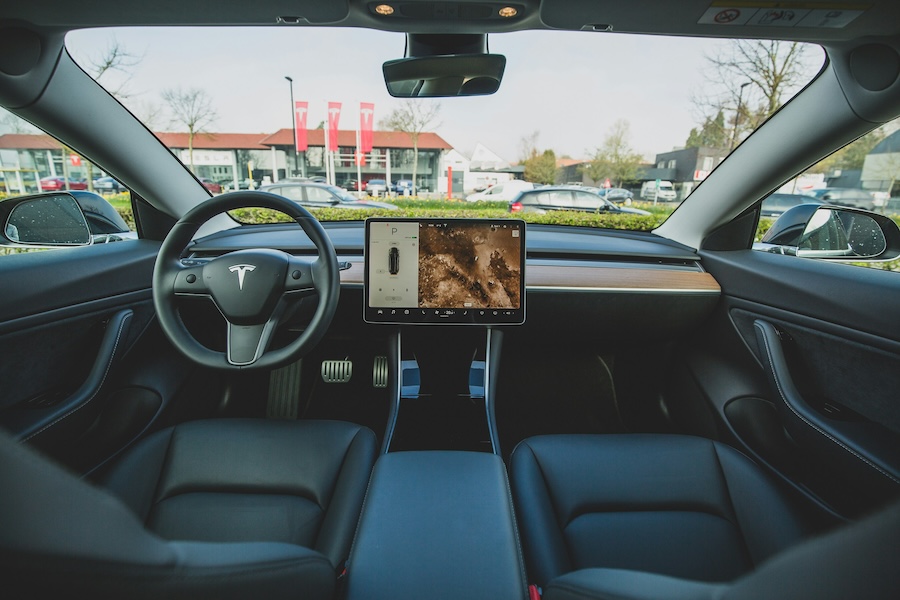
Source: Unsplash
Similarly, Google’s DeepMind has engineered an AI system capable of identifying more than 50 eye conditions with accuracy matching that of a medical professional. Looking ahead to 2025, we can anticipate further advancements in AI’s ability to meticulously analyze medical imagery, thereby supporting doctors in the early and precise diagnosis of diseases.
AI will create new opportunities and challenges for the economy and society
AI is expected to generate significant economic value in the coming years, creating new markets, products, services, and jobs. However, AI will also disrupt existing industries and occupations, requiring workers to adapt their skills and roles. AI will also raise ethical and social issues, such as privacy, fairness, accountability, and trust. By 2025, we will need to balance the benefits and risks of AI for individuals and communities and ensure that it is aligned with our values and goals.
As an illustration, the World Economic Forum projects that the integration of AI technologies may lead to the emergence of more than 133 million fresh employment opportunities worldwide by 2025. Conversely, this transformation will necessitate workers to adjust their skillsets and job responsibilities, prompted by the advent of AI. In fact, by 2025, it is anticipated that around 60% of the workforce will need supplementary training.
AI will facilitate learning
AI will also help improve learning outcomes, customize curricula, provide feedback, and enhance accessibility. AI in learning will also create more engaging and immersive experiences, such as virtual reality, augmented reality, gaming, and art. AI will also facilitate communication, collaboration, and empathy across cultures and languages.
Virtual reality and augmented reality technologies powered by AI will offer immersive educational experiences, transcending traditional classroom boundaries. These technologies will revolutionize the way knowledge is imparted and evaluated.

Source: Unsplash
Progress in natural language processing and voice recognition will usher in a new era of conversational AI tutors capable of engaging in interactive conversations with students. These tutors will possess the ability to offer instant feedback on a student’s progress, aiding them in comprehending their areas of proficiency and areas needing improvement.
Additionally, virtual reality and augmented reality technologies, enhanced by AI, will provide immersive educational encounters that go beyond the confines of conventional classrooms. These technologies are poised to transform the methods of both imparting knowledge and assessing learning outcomes.
Takeaway
Artificial intelligence is rapidly creating exciting new opportunities across a wide variety of industries and sectors. It’s already disrupting many of these industries and is expected to shake up many more in the years to come.
Public and private companies alike are quickly coming to realize that, given the correct guidance and structure, artificial intelligence recent developments can produce massive and positive changes in virtually every aspect of human life. Only time will tell what the future has in store for machine learning and the many bright minds behind implementing artificial intelligence.
Author Bio
Kristie Wright is an experienced freelance writer who covers topics on logistics, finance, and management, mostly catering to small businesses and sole proprietors. When she’s not typing away at her keyboard, Kristie enjoys roasting her own coffee and is an avid tabletop gamer.
